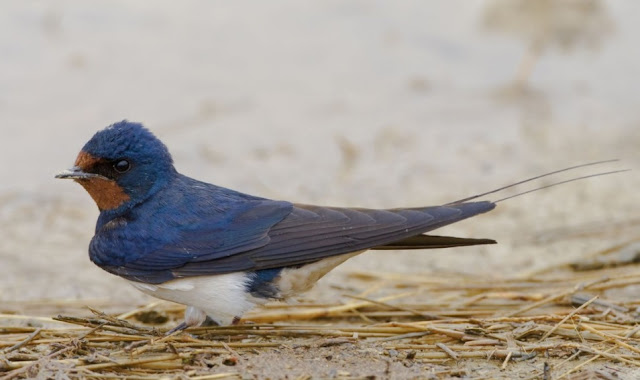The Tree Pipit's Life
The tree pipit prefers to live on the brink of woodlands and clearings. Marshes are incredibly popular, but removed woodland parcels and heathlands are also inhabited by the tree pipit. Unlike turf pipers, tree pipits often choose a tree. Particularly the tune trip of a tree pipit, such as that of the turf pipit, is very characteristic.
 |
| The tree pipit |
The bird starts to fly up from a tree and after that lands back right into a tree such as a parachute or a badminton shuttlecock with rigid wings and dangling legs. In the center of the day on boiling warm heather, when all various other bird species maintain their beaks with each other, the melodic tune of tree pipits can still be listened to.
Highly looks like turf pipit but has a more striking head pattern and a somewhat thicker beak. Fine, slim brushstrokes leave the flanks, which are plainly thinner compared to the breast red stripe (these are approximately the same for the turf pipit); if it can be seen, the brief back toe fingernails is also a great feature. Best distinguishable by sound and habits. No distinction between man and female.
THE TREE PIPIT BREEDS
Sings from the start of April to August. Breeds from mid-May. A couple of clutches annually with 4-6 eggs. The nest is built by the female: a dish of dry turf, often with a bottom of mauve and olive and better turfs, located in an opening in the ground. After 12-14 days of incubation, the eggs hatch, and after the same duration, the young can fly.
THE TREE PIPIT HABITAT
On the sandy dirt, the tree pipit is a characteristic breeding bird of heaths and dunes with some storage space. It also nests (partially also outside the sandy dirt) on clear layers, in young plantings, and sometimes also shrubs and roadway plants in farmland. Poplar woodlands and drying out and forested reduced peat bogs are also inhabited.
THE TREE PIPIT FOOD
The food is composed mainly of bugs. The young are fed solely on bugs, mainly weevils. Foraging for food mainly occurs on the ground, particularly in-between ground cover and reduced greenery, sometimes also on branches, branches, and tree stumps.
THE TREE PIPIT MIGRATION
Day hikers often separated into small teams. The first tree pipers are not expected before the beginning of April and the large masses show up after mid-April. Transportation occurs until mid-May, with the top at the end of April and very early May. Along the coast, solid (southern) easterly winds can cause the drive to occur, especially at Breskens and Eemshaven.
From the end of July, the breeding premises will be slowly left. In between mid-August and very early October, great deals go through, particularly over the southeastern fifty percent of the nation (the numbers, however, are absolutely nothing compared with the turf pipit). The movement top drops at the end of August and the first fifty percent of September. In Africa, the species hibernates from Mali to Ethiopia, and birds that follow the eastern movement path through Egypt hibernate further southern to the north suggestion of Southern Africa.
THE TREE PIPIT DISTRIBUTION
In Europe, the tree pipit occurs mainly in the warm area and is missing in the severe north, south, and west.

